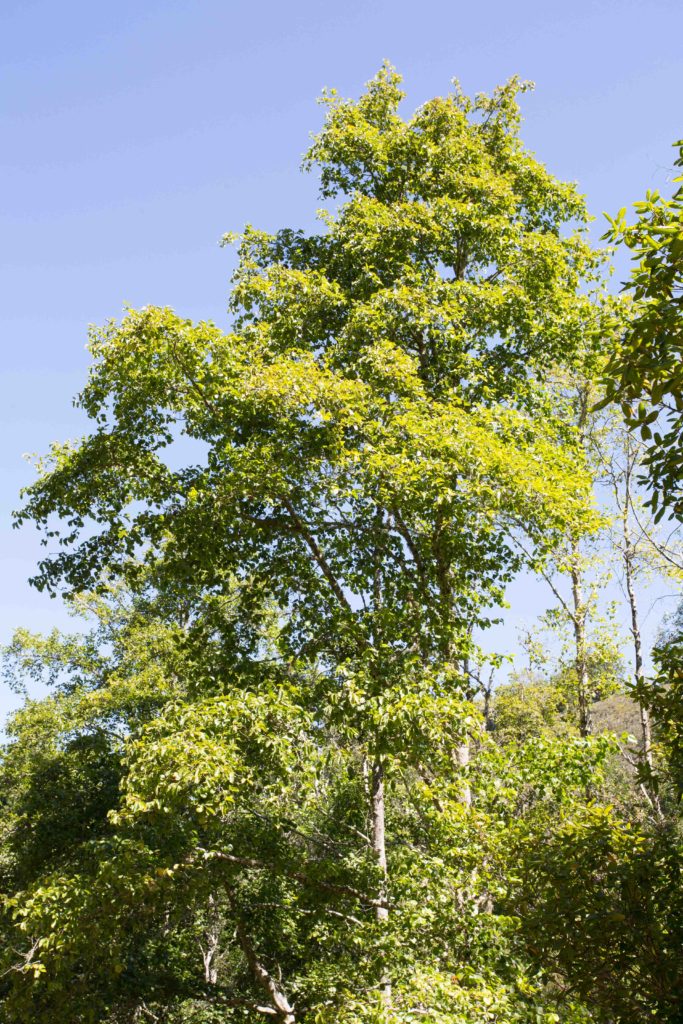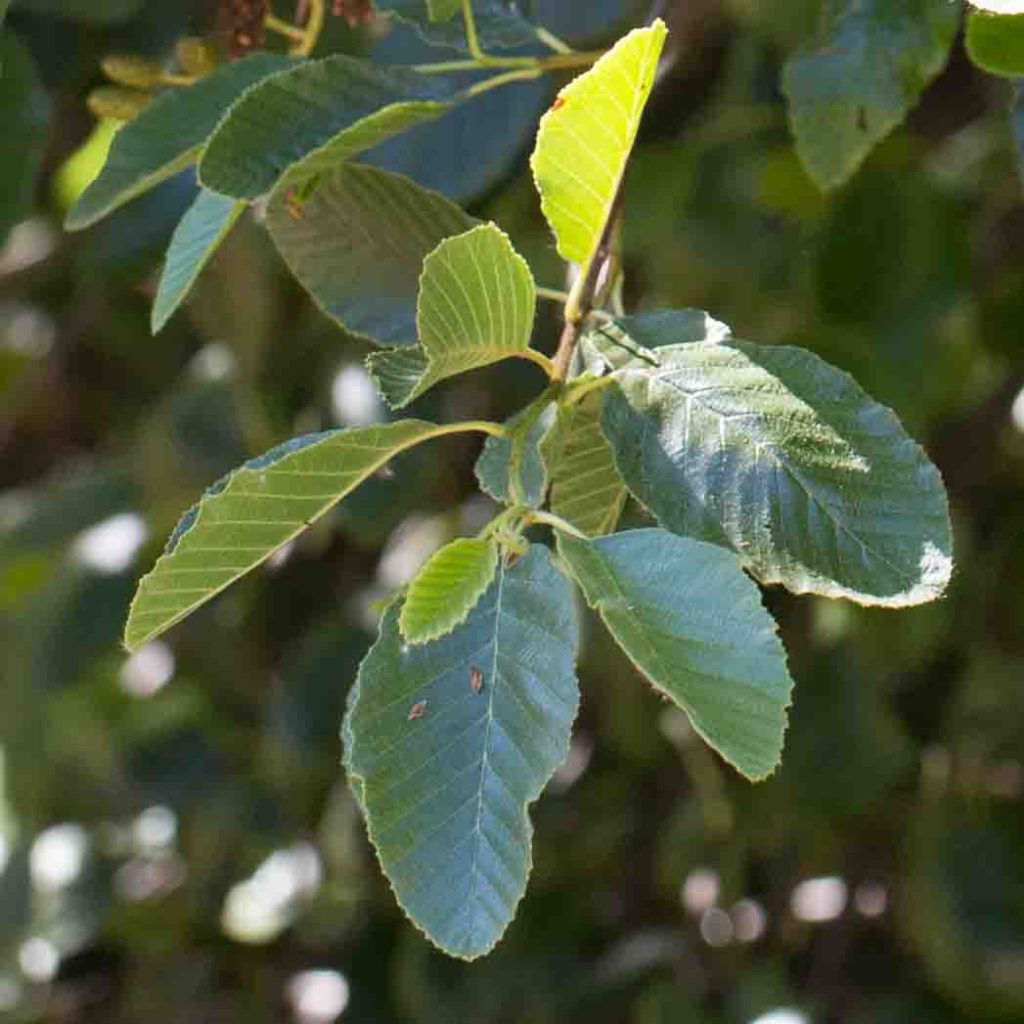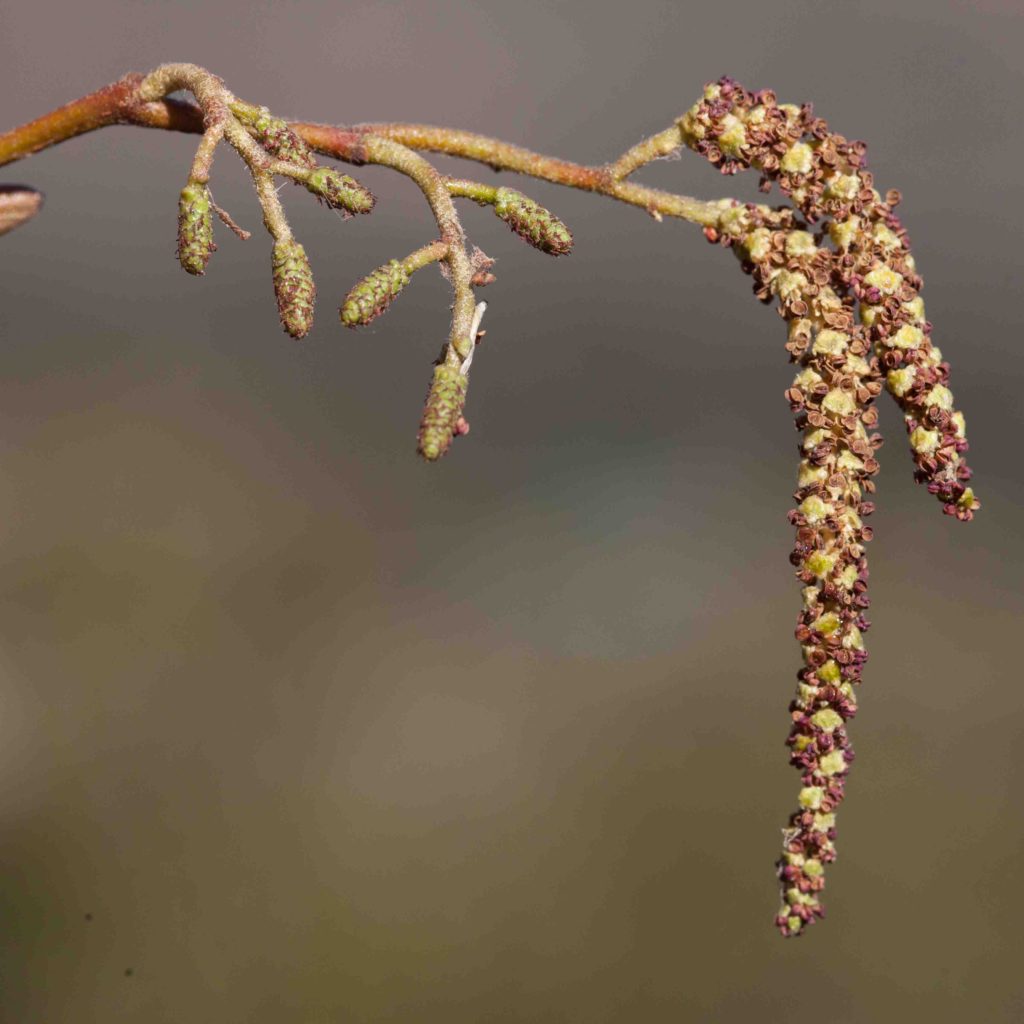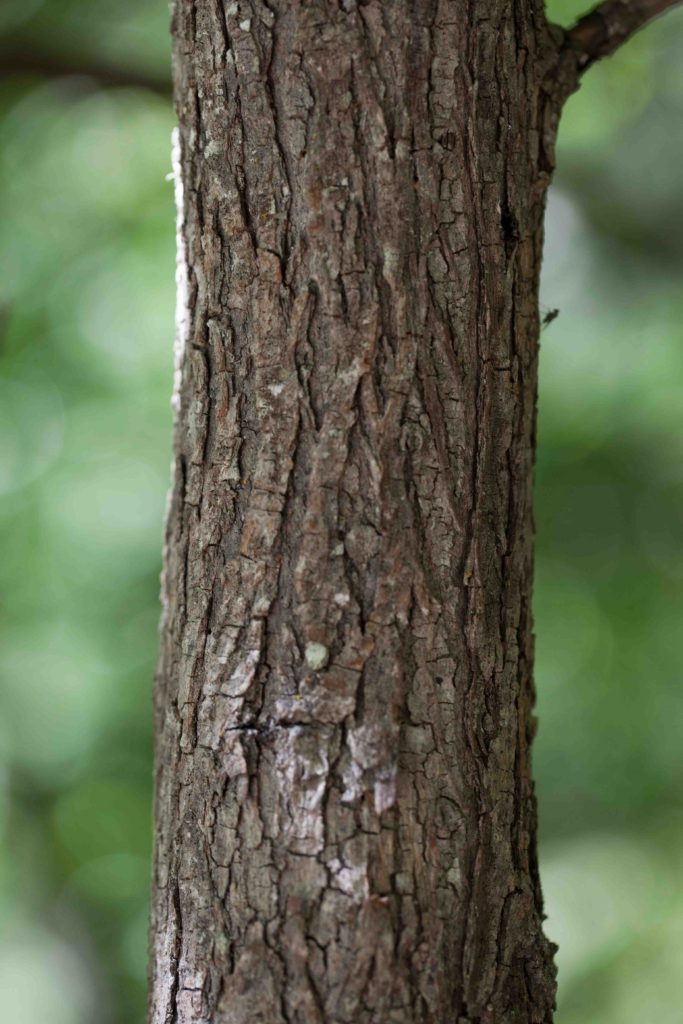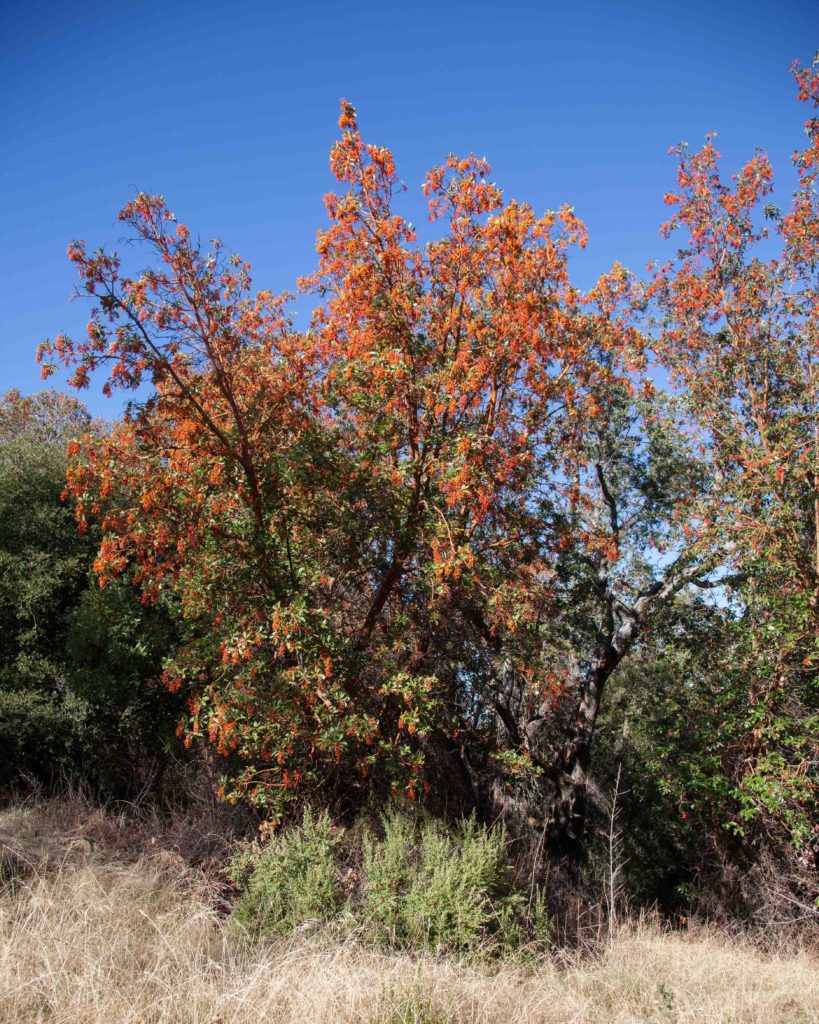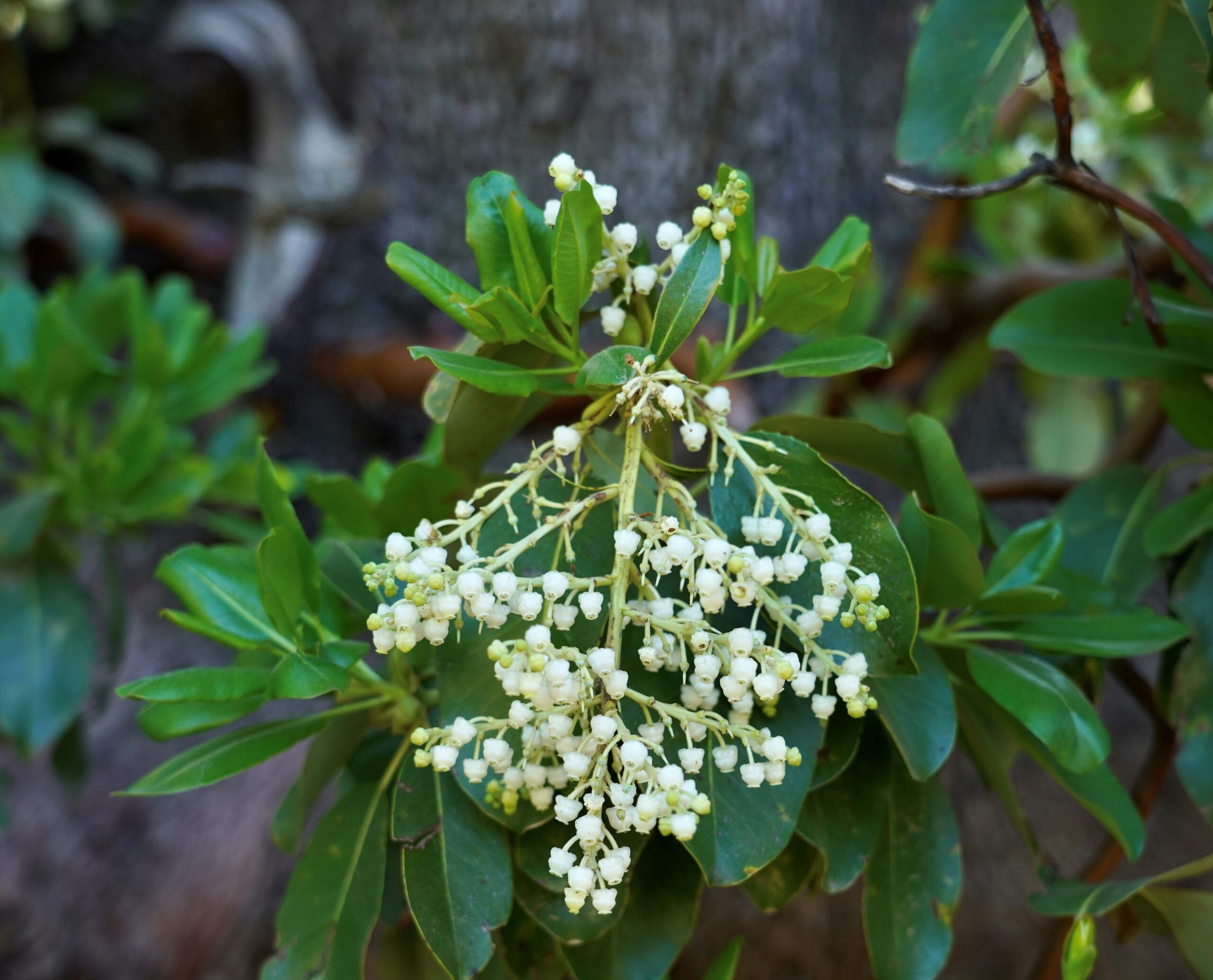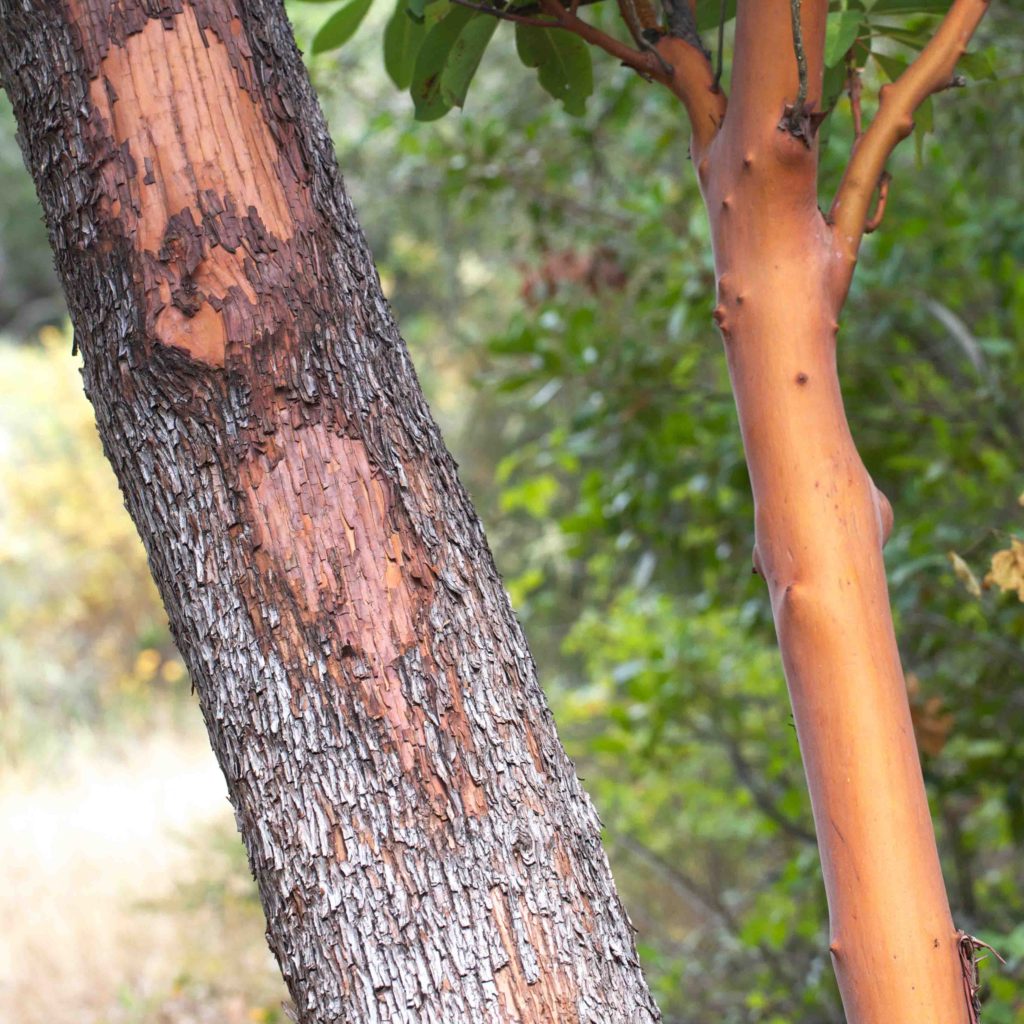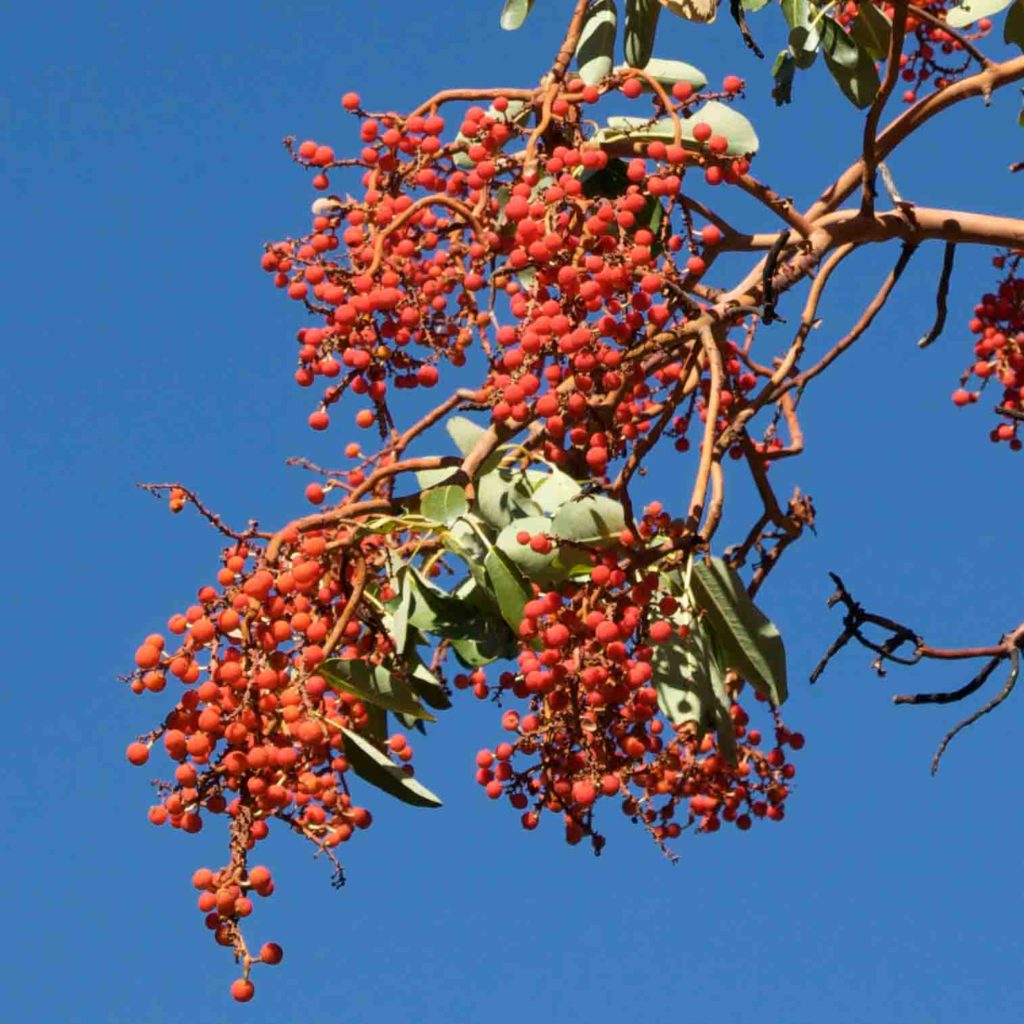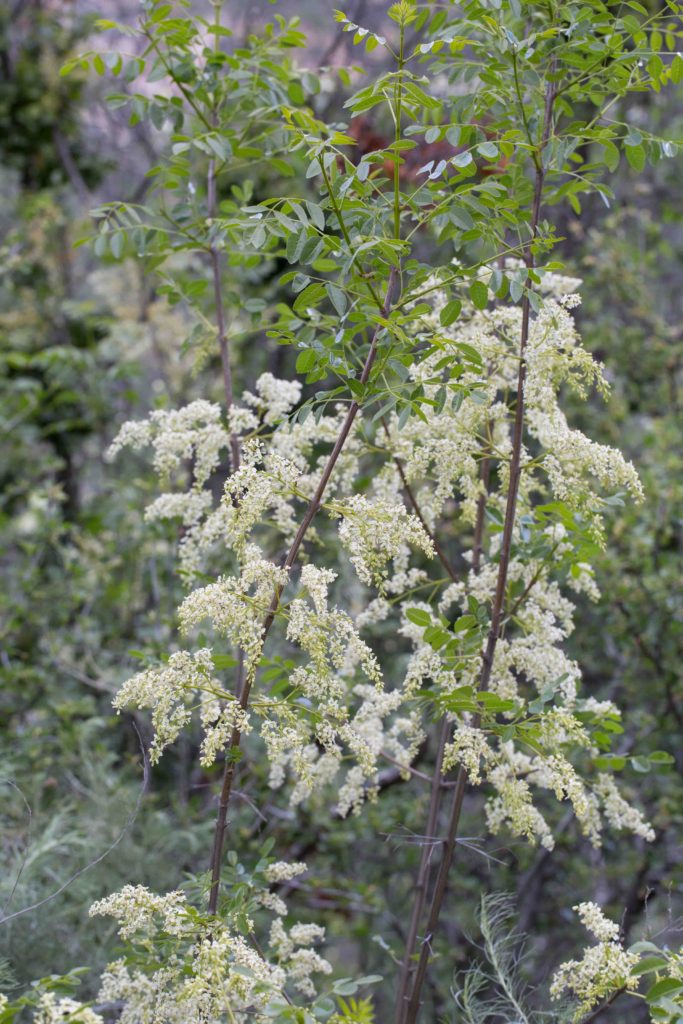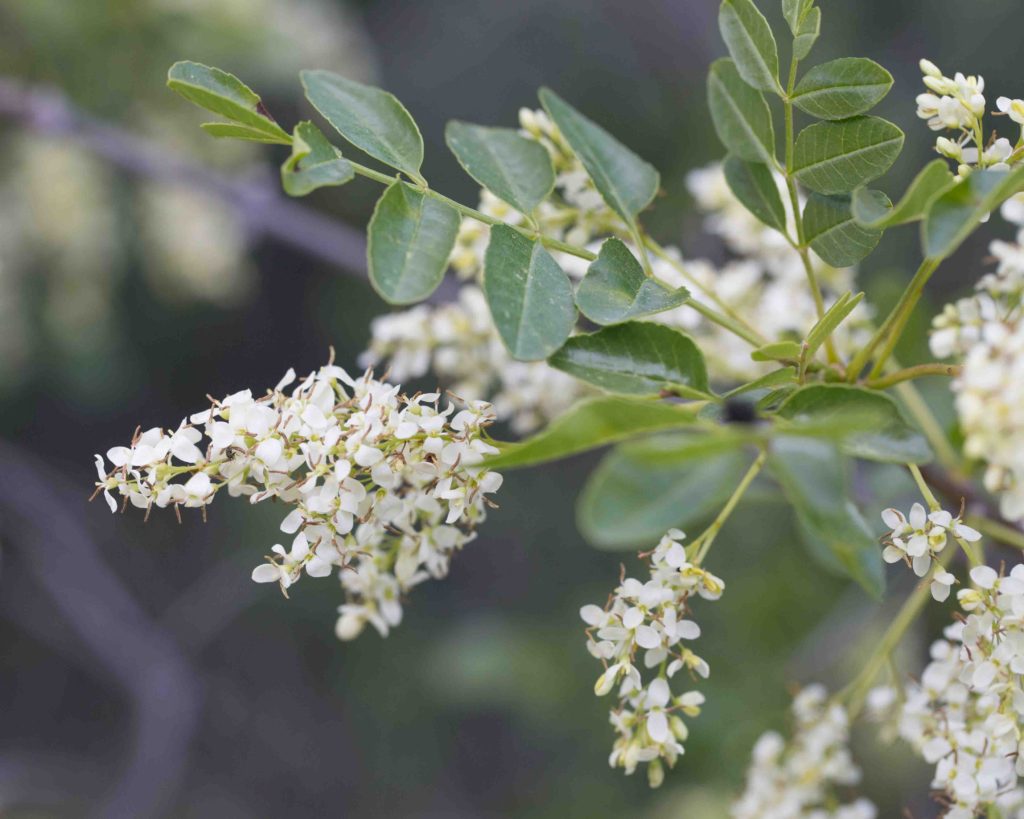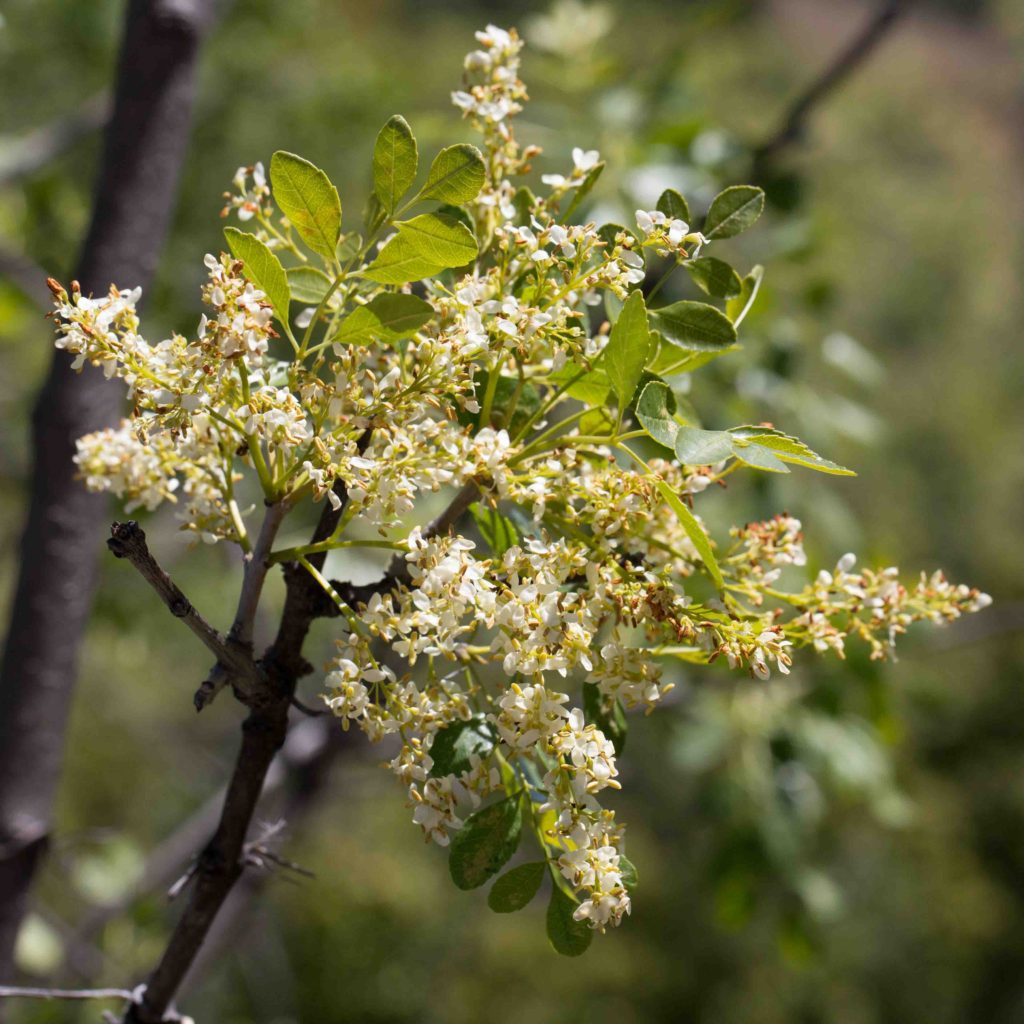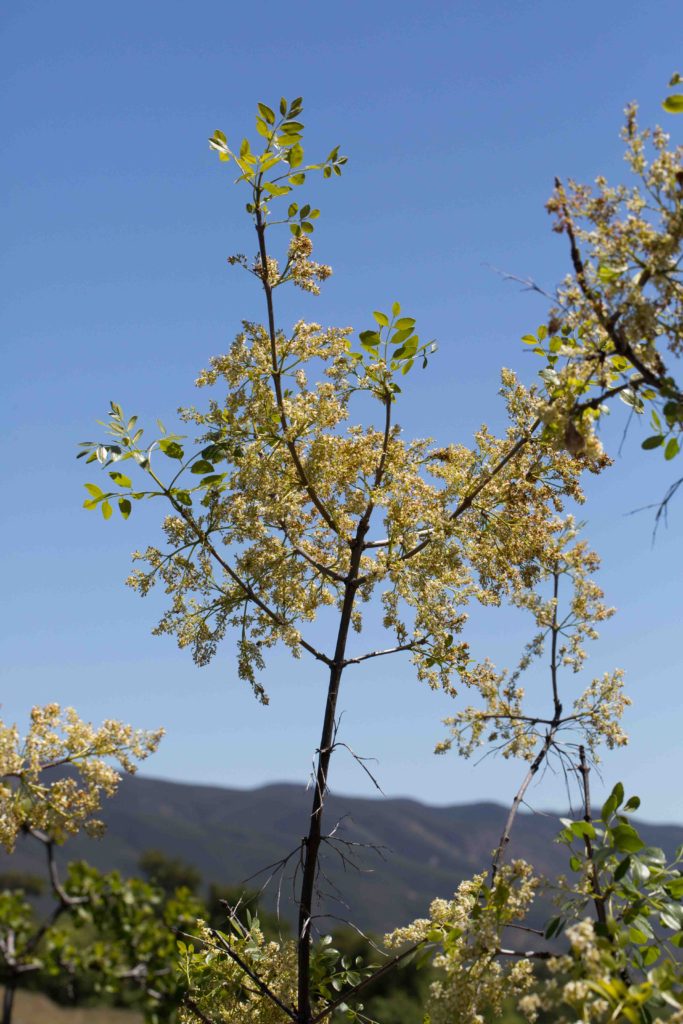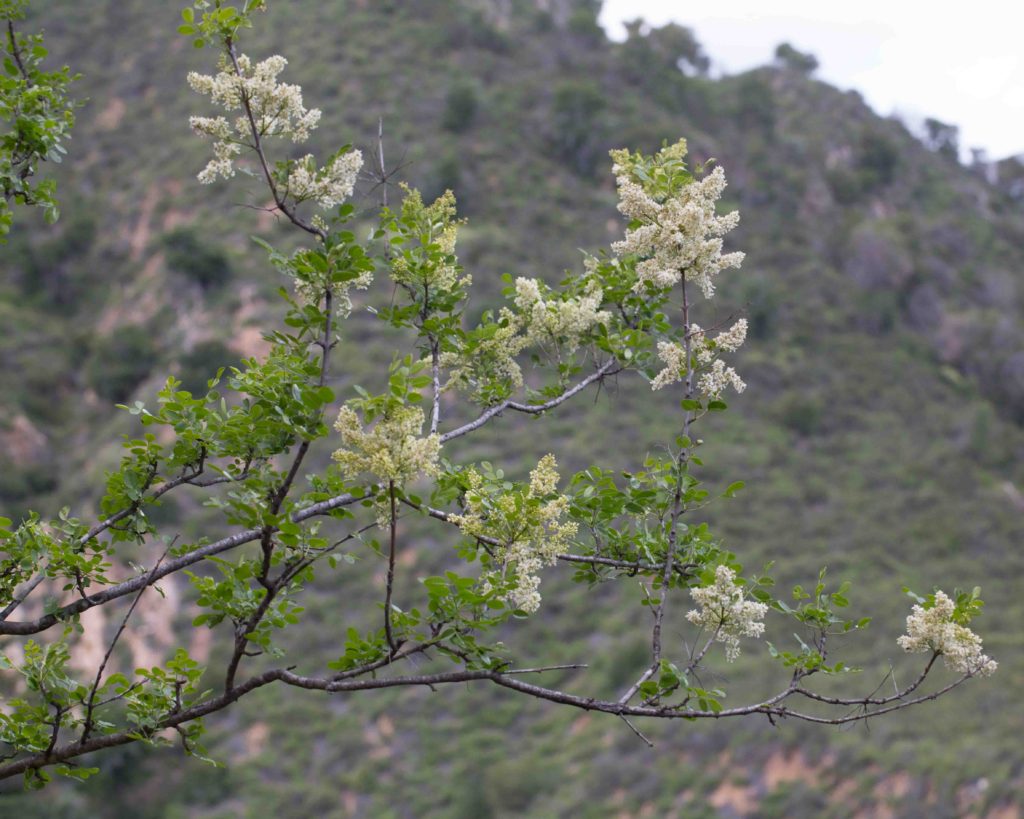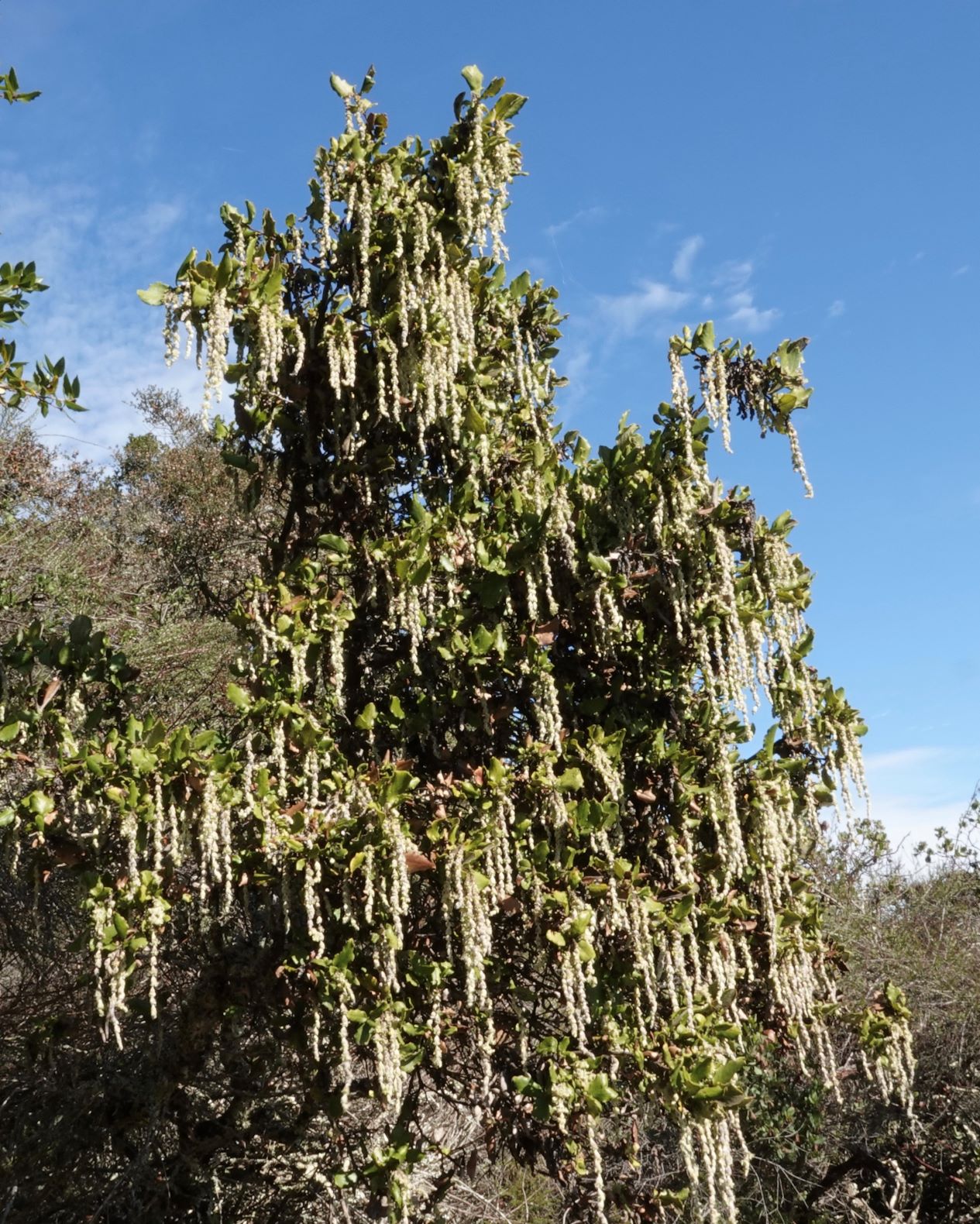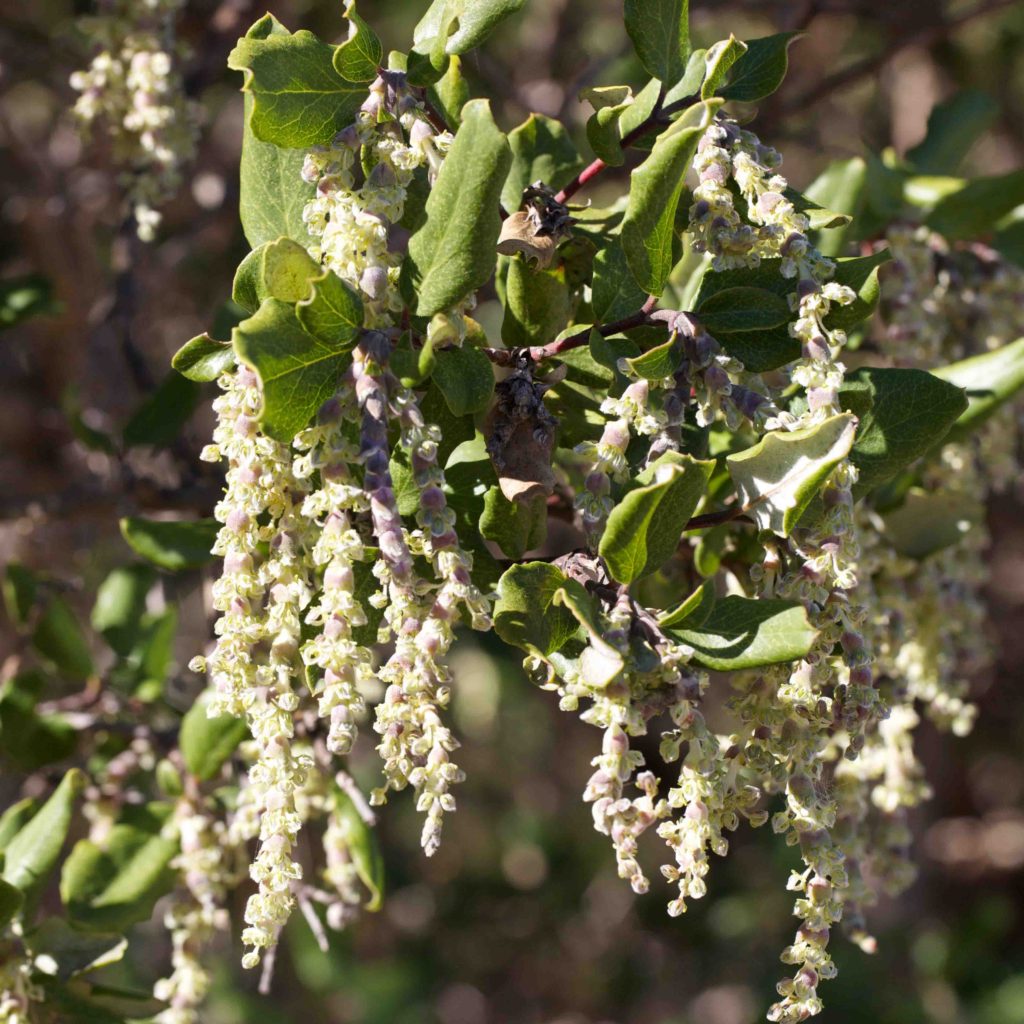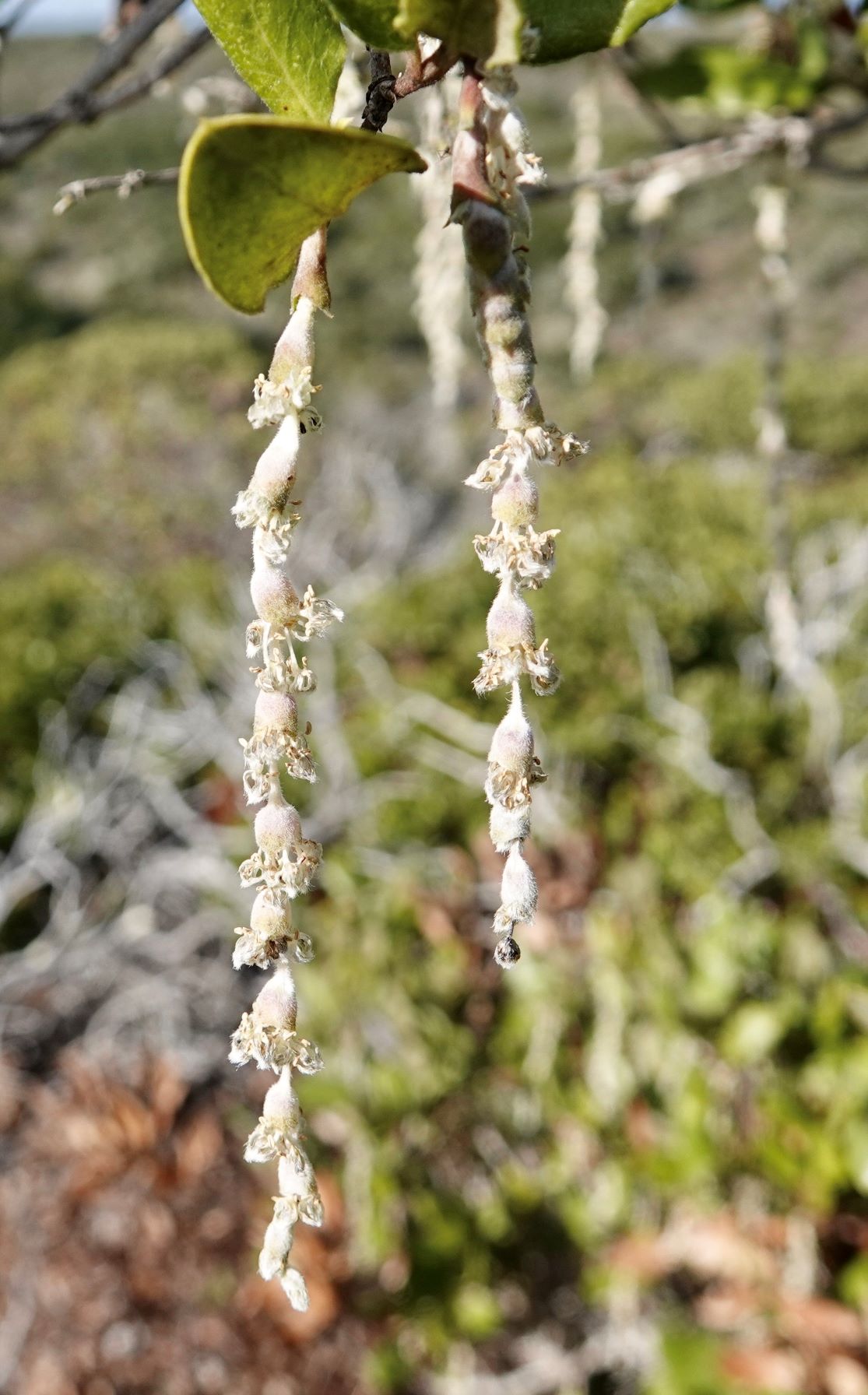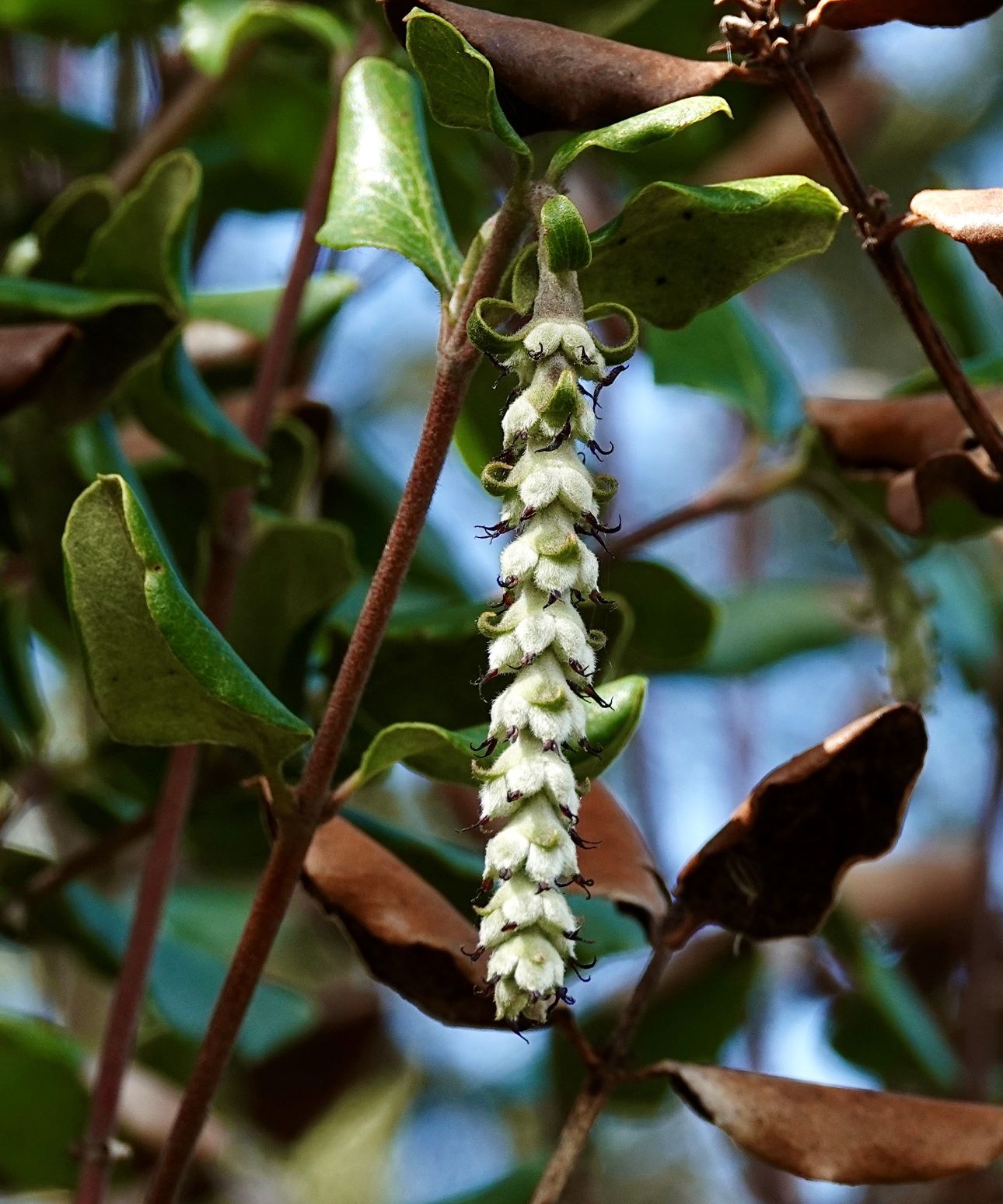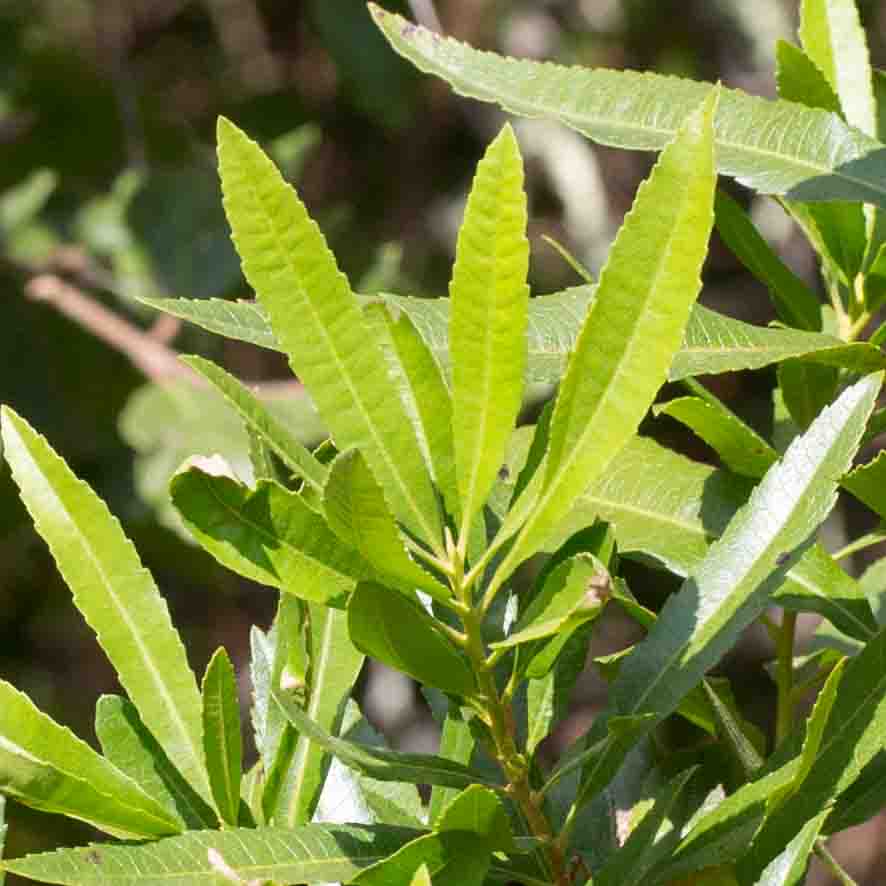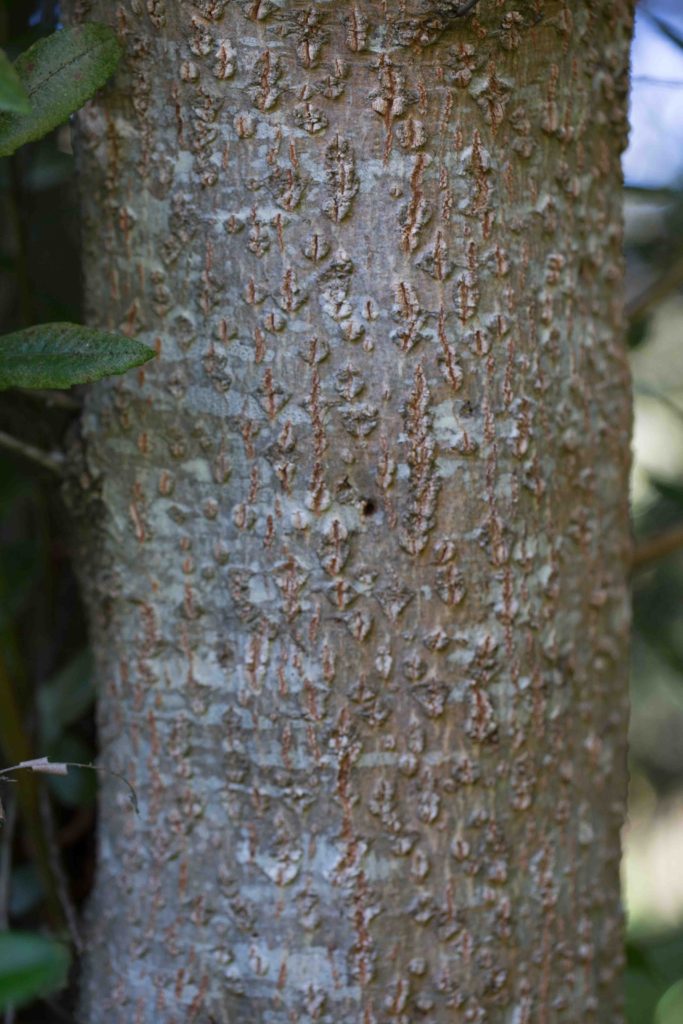Miscellaneous Native Trees
White Alder – Alnus rhombifolia : Betulaceae – Birch Family
Height:
< 35 – m
Habitat:
Streams below 1650 m
Blooms:
Jan–Apr
Notes:
This is a common riparian tree, and an indicator of high water table levels. It may die if the water level drops for an extended period. Leaves are heart-shaped to elliptic, with acute or rounded tips, dull green above and paler beneath. The leaf margins are flat and finely serrated, with veins that are prominent but not indented. The tree is monoecious: male flowers take the form of long pendulous catkins, while female flowers are on a separate stem, a little above the males. The female flowers are like miniature cones, initially green, then turning red. The mature cones often remain on the tree until the following year.
Madrone – Arbutus menziesii : Ericaceae – Heath Family
Height:
5–40 m
Habitat:
Wooded slopes & canyons
Blooms:
Mar–May
Notes:
Madrones are most easily recognized by their shredding outer bark, which can leave the smooth inner reddish bark entirely exposed. They are evergreen with large, dark green, leathery leaves, ovate to oblong and generally rounded at the tip. They produce clusters of small, white, bell-shaped flowers which are similar to other members of its family (including their shrubby relatives, the manzanitas). The fruits are berries, bright red in the fall, sometimes producing dramatic displays. Photo #3 (from left) by CJH.
California Flowering Ash – Fraxinus dipetala : Oleaceae – Olive Family)
Height:
1.5–3(6) m
Habitat:
Canyons, dry slopes, chaparral
Blooms:
Apr–June
Notes:
This a large shrub or small deciduous tree, with compound leaves. There are usually 5–7 leaflets, each 2–4.5 cm long, ovate to rounded. The leaves have serrated or crenate margins, and are dark green above, paler beneath. It bears large panicles of tiny, short-lived white flowers in spring. The fruit is a flat samara.
Coast Silk Tassel – Garrya elliptica : Garryaceae – Silk Tassel Family
Height:
< 8 m
Habitat:
Outer Coast Ranges < 800 m
Blooms:
Jan–Mar
Notes:
This is a large shrub to small tree, common in chaparral. Leaves are somewhat reminiscent of live oak leaves. They are tough, colored green above, but much paler and tomentose beneath. They usually have strongly wavy margins, often rolled under. Coast silk tassel is dioecious (separate male and female plants). The male plant’s catkins (photos #1-2 below) are much longer than ones on the female plant (photos #3-4 below). The slender, gray-white male catkins contrast with the shorter, silvery-gray female ones, with their firm, hairy flowers. Some have observed the female flowers seem to have eyelashes, which might help to remember the difference! On cultivated forms of this plant, male catkins tend to be much longer than those found in wild plants. Large photo at left, and photos #2-4 below by CJH.
California Wax Myrtle – Morella californica : Myricaceae – Wax Myrtle Family
Height:
2–8 m
Habitat:
Coastal, canyons & moist slopes
Blooms:
Mar–Apr
Notes:
This is a large evergreen shrub or small tree. It develops a rounded crown when growing in the open, but is thinner and more straggly when in the shade. The bark is smooth and mottled gray. The leaves are distinctive, long, glossy, lanceolate to elliptic, serrated and acute-tipped. They give off a spicy aroma on warm days. Flowers are deep red in a small spike. The tree may be monoecious or dioecious. Fruits are small (6 mm), drupes or nut-like, covered with purple resin and a waxy coating.
